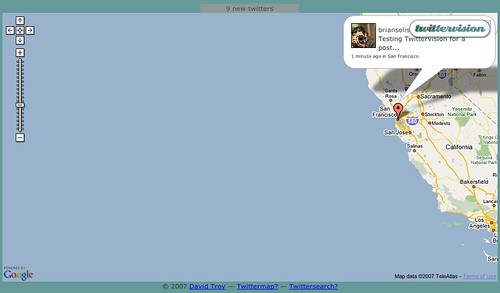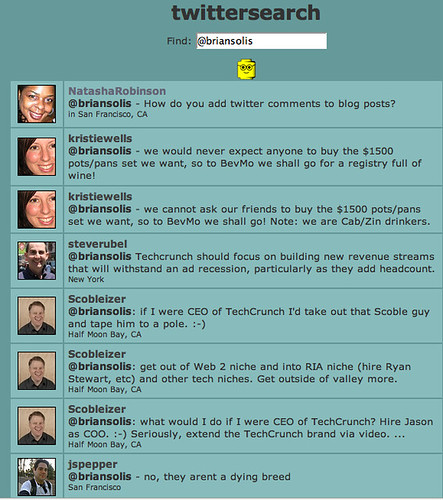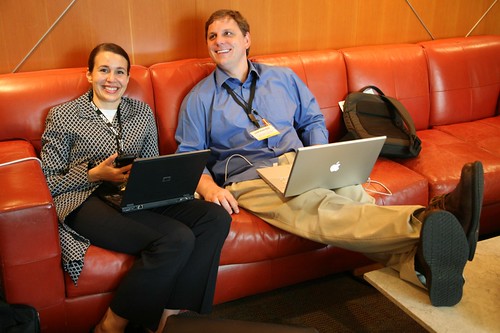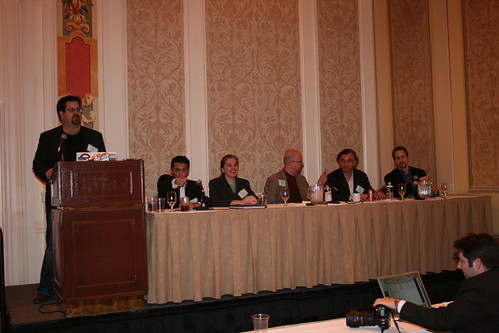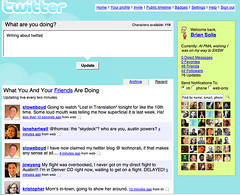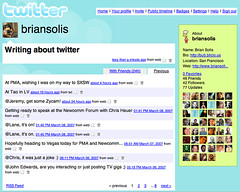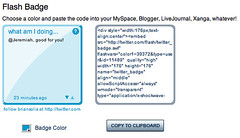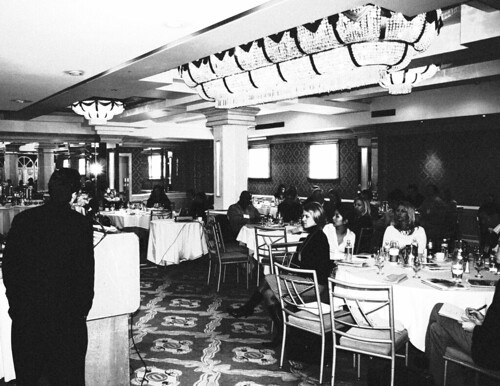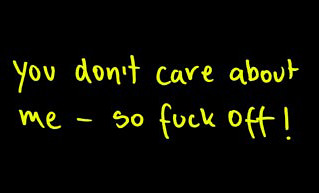 On the heels of Infoworld's news that it is shuttering its print version and shifting its business towards events and online publishing, Tim O'Reilly reports that the San Francisco Chronicle is also in dire straits.
On the heels of Infoworld's news that it is shuttering its print version and shifting its business towards events and online publishing, Tim O'Reilly reports that the San Francisco Chronicle is also in dire straits.
Indeed, traditional journalism is a dead man walking, but don't confuse newspapers with news. Reporting news on the other hand, is thriving in ways never before possible thanks to blogs, communities, networks, everywhere messaging, and everything else that defines the pervasive social media landscape.
According to O'Reilly, "Phil Bronstein, the editor-in-chief, told staff in a recent emergency meeting that the news business is broken, and no one knows how to fix it." He continues, "John Markoff (of the New York Times) remarked to me recently that every time I talk to my colleagues in print journalism it feels like a wake."
Newspapers continue to struggle in the new world of Social Media or as Doc Searls calls it, the Live Web. The blogosphere has covered this topic to mind numbing proportions over the years, but most newspaper publishers continue to place their hands over their ears chanting "la la la la, I'm not listening to you," out loud, over and over.
After all, this isn't anything new. Last year, I also reported that the San Jose Mercury News was also suffering, laying off 101 employees with many more slated for the near future.
We live in incredible times. Everything around us is changing with frightening diligence. So, where's the adaptation and desire to keep up with consumers? It can't be chalked up to simple underestimation or conceit, can it?
Many pundits criticize traditional media for not monitoring usage patterns or evolving to keep pace with people. Yet those that do, are also criticized for not going far enough. For example, USAToday recently found itself between two camps when it socialized its online news presence. Some loved it, others hated it. But, as I mentioned before, it is a promising glimpse of how all news will enable viewers to interact with reporters as well as other readers and peers inside USAToday.com.
It's an online world now so most people have access to news as it happens, whether it's on their desktop, notebook, or phone. And something that hasn't been discussed nearly as much, is that people also have immediate access to posting and browsing classifieds ads in the same way as news. Classifieds are the lifeblood of many newspapers.
Are journalists at fault? No, it's the businesses in which they work and the institutions where the were trained. Old school news professionals and the people running the business of traditional news need to adapt and realize that there is an incredible shift transpiring while they sit in denial. This shift is not only evident in the online statistics available to anyone who bothers to check, it is also ominously evident in the dramatic quarter-to-quarter deciline in revenue.
There's still hope though - even though many believe it may be too late, I estimate that it's better late than never. At least there's a shot at staying in the game. Journalists, with updated training, will have an edge over bloggers because they will have access to the tools that separate popularity from respect.
Dave Winer suggests, "First, reform journalism school. It's too late to be training new journalists in the classic mode...journalism like everything else that used to be centralized is in the process of being distributed. In the future, every educated person will be a journalist, as today we are all travel agents and stock brokers."
Dave's right. This is what I've been saying all along. Just look at all of the wannabe citizen journalists and camera phone photo journalists. They're capturing news as it happens and there are plenty of platforms out there dedicated to broadcasting their news to the masses. Why not embrace them? Why not crowdsource news?
Off all the memes out there, Doc Searls provided the most poignant steps to help save newspapers. In fact, it is the manifesto that even I wouldn't even dare to top.
1) Stop giving away the news and charging for the olds.
2) Start featuring archived stuff on the paper's website. Link back to as many of your archives as you can. Get writers in the habit of sourcing and linking to archival editorial. This will provide paths for search engine spiders to follow back in those archives as well. Result: more readers, more authority, more respect, higher PageRank and higher-level results in searches.
3) Link outside the paper. Encourage reporters and editors to write linky text. This will encourage reciprocity on the part of readers and writers who appreciate the social gesture that a link also performs.
4) Start following, and linking to, local bloggers and even competing papers (such as the local arts weeklies).
5) Start looking toward the best of those bloggers as potential stringers. Or at least as partners in shared job of informing the community about What's Going On and What Matters Around Here.
6) Start looking to citizen journalists (CJs) for coverage of hot breaking local news topics -- such as hurricanes, tornadoes, floods, wildfires and so on. There are plenty of people with digital cameras, camcorders, cell phones and other devices that can prove mighty handy for following stories up close and personally.
7) Stop calling everything "content". It's a bullshit word that the dot-commers started using back in the '90s as a wrapper for everything that could be digitized and put online. It's handy, but it masks and insults the true natures* of writing, journalism, photography, and the rest of what we still, blessedly (if adjectivally) call "editorial". Your job is journalism, not container cargo.
8) Uncomplicate your webistes. I can't find a single newspaper that doesn't have a slow-loading, hard-to-navigate, crapped-up home page. T
9) Get hip to the Live Web. That's the one with verbs such as write, read, update, post, author, subscribe, syndicate, feed and link. This is the part of the Web that's growing on top of the old Static Web of nouns such as site, address, location, traffic, architecure and construction.
10) publish Rivers of News for readers who use Blackberries or Treos or Nokia 770s, or other handheld Web browsers.
11) Remember the higher purpose behind the most informative writing — and therefore behind newspapers as well.
More on the subject:
Stowe Boyd predicts, "Journalists will, yes, have to get other jobs, or figure out how to make it online."
Don Dodge asks "Has the Internet killed newspapers, magazines, music and video?"
Robert Scoble declares, "Newspapers are dead. The industry has NOT invested in its future. It is reaping the rewards of that. How many future journalists are being trained for the online world? I can tell you how many: zero."
Scott Karp of Publishing 2.0 says the business just needs a little imagination, "It is true that the newsPAPER business is broken. It is also incorrect that “no one knows how to fix” the news business. What the news business and the entire media business are suffering from most right now is a failure of imagination."
Matthew Ingram ponders, "But I don’t think it advances the debate any to throw around apocalyptic pronouncements — and I say that knowing full well that many people will discount what I’m saying because I work for a provider of dead-tree media." Digg
Netscape
newspapers news journalism journalist matthew+ingram scott+karp robert+scoble don+dodge stowe+boyd dave+winer tim+o'reilly "san francisco chronicle" chronicle social media socialmedia social+media media2.0 media+2.0 "media 2.0" mercury+news san+jose newyorktimes new+york+times usatoday usa+today citizen+journalism citizen






